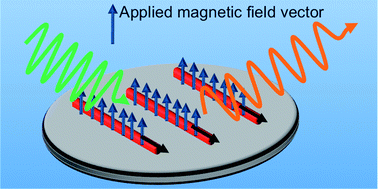The influence of applied magnetic fields on the optical properties of zero- and one-dimensional CdSe nanocrystals†
Abstract
Shape-dependent exciton relaxation dynamics of CdSe 0-D

* Corresponding authors
a Department of Natural Sciences, Tennessee Wesleyan College, Athens, TN 37303, USA
b National High Magnetic Field Laboratory, Tallahassee, FL 32310, USA
c
Department of Chemistry and Biochemistry, Florida State University, Tallahassee, FL 32306-4390, USA
E-mail:
klk@chem.fsu.edu
Tel: +1 850-645-8617
Shape-dependent exciton relaxation dynamics of CdSe 0-D

 Please wait while we load your content...
Something went wrong. Try again?
Please wait while we load your content...
Something went wrong. Try again?
D. E. Blumling, S. McGill and K. L. Knappenberger, Nanoscale, 2013, 5, 9049 DOI: 10.1039/C3NR03252C
To request permission to reproduce material from this article, please go to the Copyright Clearance Center request page.
If you are an author contributing to an RSC publication, you do not need to request permission provided correct acknowledgement is given.
If you are the author of this article, you do not need to request permission to reproduce figures and diagrams provided correct acknowledgement is given. If you want to reproduce the whole article in a third-party publication (excluding your thesis/dissertation for which permission is not required) please go to the Copyright Clearance Center request page.
Read more about how to correctly acknowledge RSC content.
 Fetching data from CrossRef.
Fetching data from CrossRef.
This may take some time to load.
Loading related content
